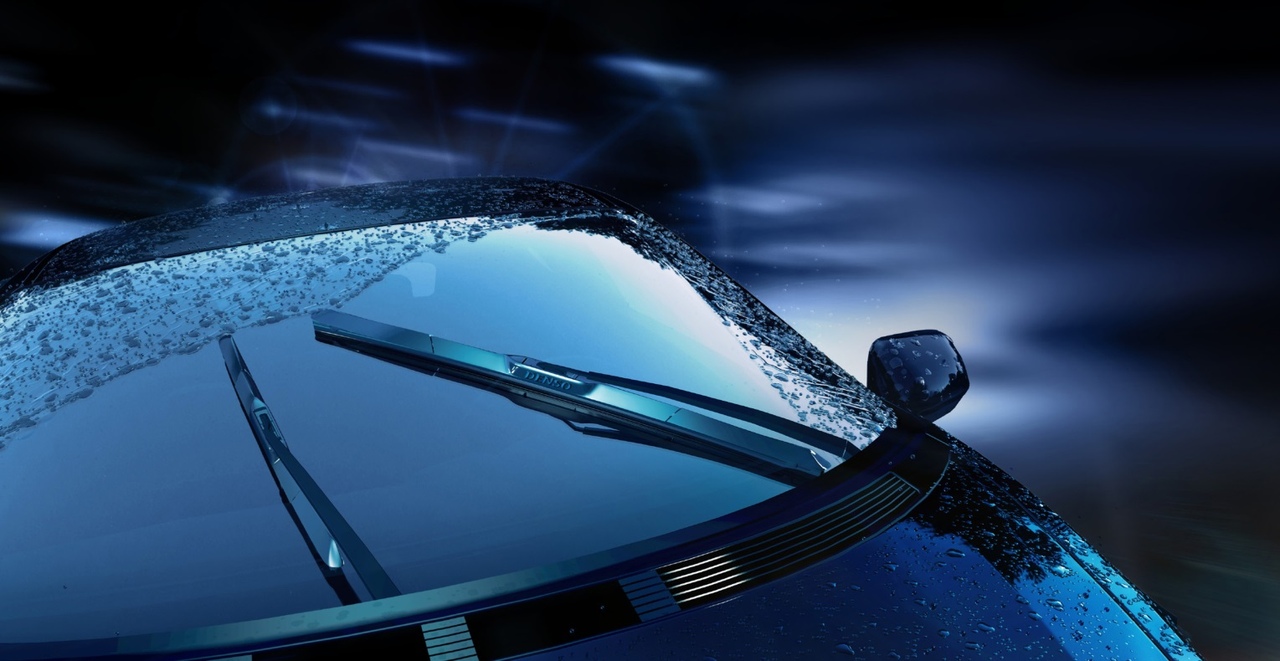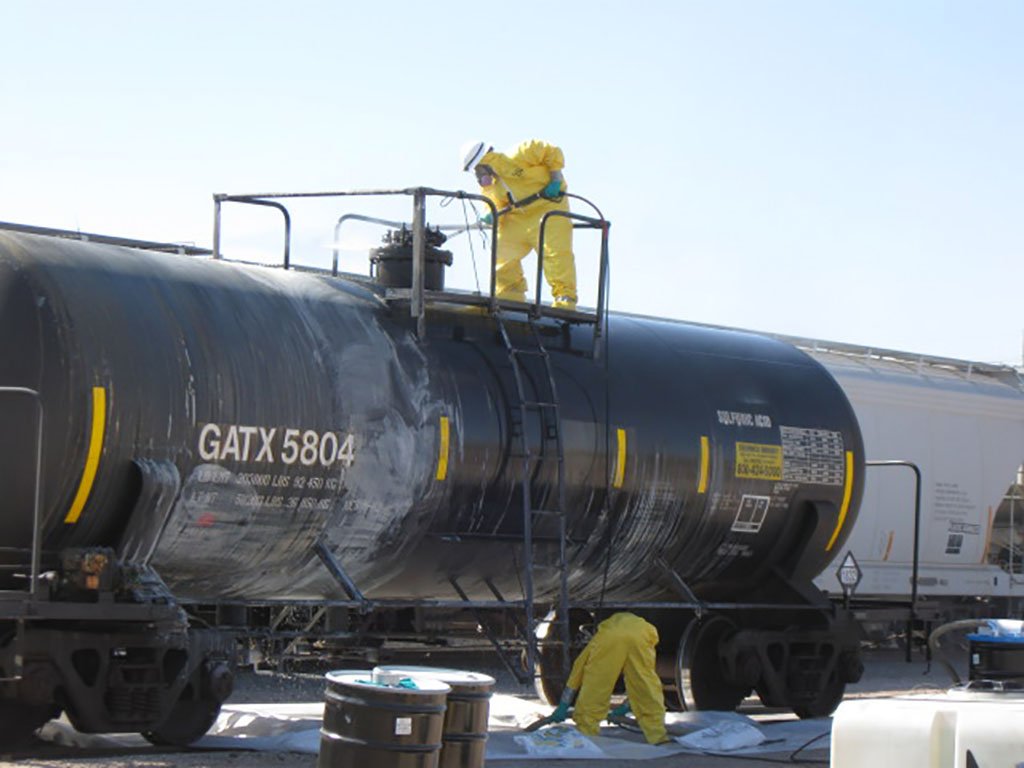Operating fluids
The key characteristics of a car – comfort and safety – are only achievable provided that all of the car’s components and units function properly. It is difficult to overestimate the importance of the brake system, the cooling system of a vehicle’s major unit – the engine, as well as the windshield cleaning system. Their proper functioning is guaranteed through the use of respective operating fluids, and it is on the quality of these fluids that the service life and efficiency of a car’s systems depend. In the end, all of this determines the most important thing about the operation of vehicles – road safety. At KHIMIK, we therefore place special emphasis on consumer properties, parameters, and quality of our operating fluids, which can be categorized into the following groups:
- Windshield washer fluids
- Concentrated windshield washer fluids
Windshield washer fluids

Alcohol is the main ingredient in windshield washer fluid. Alcohol prevents fluid from freezing in winter and helps it cope with organic dirt on the windshield. It is utterly important to check that isopropyl or ethyl alcohol is used. These are the only alcohols permitted by the law, whereas methyl alcohol is prohibited, since it is a nerve agent. Since the production of ethyl-based products is subject to stringent state control, nonfreezing liquids are usually produced with isopropyl alcohol. It, however, has one disadvantage, which is odor nuisance. So another important ingredient in windshield washer fluid is a fragrance, which is capable of disguising the odor of alcohol but, unfortunately, cannot fully remove it.
The absence of odor, however, is not attributable to a fragrance alone. Manufacturing technology, the right choice and combination of ingredients are all essential for the production of a good windshield cleaner. KHIMIK, therefore, pays great attention to the development, creation, and testing of products within this category.
Here is the specification for windshield washer fluids produced by KHIMIK.
- Windshield washer fluids are intended for cleaning windshields of a vehicle with the use of a washer.
- When stored and transported at temperatures below their freezing point, windshield washer fluids can freeze and fully recover all their properties when defrosted.
- Windshield washer fluid is an aqueous solution of alcohol with active admixtures and dye.
- Windshield washer fluids shall meet the Unified Sanitary Requirements of the Customs Union, and the requirements of GOST R 51696 and Specification 2384-097-00205357-2008.
The physical and chemical quality indicators of windshield washer fluids shall match the requirements and standards in the table below. Note: Standards marked with * apply to a concentrate diluted with distilled water at a ratio of 1:3.
Concentrated windshield washer fluids
The specification for windshield washer fluid concentrates produced by KHIMIK.
- Windshield washer fluid concentrate is intended for cleaning windshields and headlamps of a vehicle with the use of a washer.
- Windshield washer fluid concentrate is an aqueous solution of isopropyl alcohol with active admixtures and dye.
- Windshield washer fluid concentrates shall meet the Unified Sanitary Requirements of the Customs Union, and the requirements of GOST R 51696 and Specification 2384-052-54804491-2007. The quality indicators shall match the standards in the table below.
Coolants

Modern cars are obviously equipped with many standalone systems that support and ensure the safe operation of a vehicle. Each of the systems requires timely and quality service, where the change of the main operating fluid is a must-do. The cooling system is one of the main systems of a car since it belongs to its main unit and its heart – the engine – whose functioning determines the mobility of a vehicle.
KHIMIK specializes in producing high-grade coolants for all available types of engines.
Solvents and thinners

Among other focuses of activity, the company develops and produces various solvents and thinners for industry, transport, and construction applications. The products produced by the company in this field can be categorized into the following groups:
Solvents (active solvents) – liquids that completely solve film forming substance and evaporate in the drying process. Paint solvents are compounds of different chemical nature such as aromatic, aliphatic hydrocarbons and their mixtures, simple and compound ethers, ketones, alcohols, halogenated hydrocarbons, etc.
Thinners (co-solvents) are liquids that do not solve film forming substance by themselves but, when mixed with true solvent, are capable of reducing the viscosity of a solution or imparting some special properties. A thinner to solvent ratio has to be thoroughly selected in order to obtain the best properties of paint and the optimal quality of a finished coating.
Solvent composition can also affect the stability of pigmented paints. Solvent must not displace dispersant or sorbed polymer molecules from the surface of pigments and fillers so as not to cause settling or coagulation of the pigment portion.
Both solvents and thinners must be completely removed from the coating in the course of drying after a specified period of time. Since various components in solvent mixtures are of different volatility, it is important to ensure that the most active solvents of the mixture have the worst volatility (the last to remain). Otherwise, polymer will prematurely coagulate as it becomes less soluble in the drying process, resulting in a friable coating with poor protective properties. Moreover, the escape of remaining co-solvents will be hampered.
The volatility of solvents used must be suitable for application and drying conditions. When applied by spraying (especially air spraying), small particles of paint lose some solvent on their way to the surface being painted. If losses are excessive, paint particles will become too viscous, and the coating will not be uniform.
Multiple surface defects can occur when solvents evaporate from the coating too fast. In a thick coating, the fast formation of a surface film will cause buckling (as it happens in case of intensive air exchange or draught). The fast evaporation without a surface film being formed will cause shagreen. This is due to the fact that evaporating solvent captures coating material as it goes up from within the coating. While material enriched with solvent goes up in some areas, depleted material goes down in other areas, and the increasing viscosity does not allow the coating to even out. Moreover, the fast evaporation of solvent can result in the paint surface cooling down, moisture in air condensing on the surface, and the surface layer becoming saturated with water. For nitrocellulose coatings, this can cause the blushing of the surface film.
Defects of a coating do not merely worsen its appearance but also significantly impair its protective properties due to thickness loss in the defect area, porosity, etc.
KHIMIK solvents:
Solvent 646
Solvent 646 is used to thin general-purpose nitrocellulose lacquer enamels, nitrocellulose lacquers, and nitrocellulose putties. Solvent 646 is made to GOST 18188-72.
Solvent 647
Solvent 647 is used to thin nitrocellulose lacquer enamels and nitrocellulose lacquers for passenger cars. Solvent 647 is made to GOST 18188-72.
Solvent 649
Solvent 649 is used to thin NTs-132K GOST 6631 nitrocellulose lacquer enamels until working viscosity is reached. Solvent 649 is made to Specification 2319-082-00205357-2007.
Solvent 650
Solvent 650 is used to thin nitrocellulose lacquer enamels and coatings until working viscosity is reached for touching up small areas. Solvent 650 is made to Specification 2319-083-00205357-2007.
Solvent R-4
Solvent R-4 is used to thin paints based on chlorinated polyvinylchloride resins (PSKh LS and PSKh LN), polyvinylchloride copolymers, epoxy resins, and other film-forming substances (except gray and protective enamel KhV-124). Solvents R-4 are made to GOST 7827-74.
Solvent R-12
Solvent R-12 is used to thin paints based on chlorinated polyvinylchloride resins (PSKh LN, PSKh LS), polyacrylic resins, and other film-forming substances. Solvent R-12 is made to GOST 7827-74.
Solvent RITAN-41
Solvent RITAN-41 is used to clean painting equipment after applying urethane and epoxy urethane enamels. Solvent RITAN-41 is made to Specification 2319-126-00205357-2011.
Solvent TREPP-R-1
Solvent TREPP-R-1 is used to thin epoxy and epoxy phenol enamels, and to clean painting equipment. Solvent TREPP-R-1 is made to Specification 2319-126-00205357-2011.
Solvent TREPP-R-2
Solvent TREPP-R-2 is used to thin epoxy and epoxy phenol enamels, and to clean painting equipment. Solvent TREPP-R-2 is made to Specification 2319-126-00205357-2011.
Solvent TREPP-R-3
Solvent TREPP-R-3 is used to thin epoxy and epoxy phenol enamels, and to clean painting equipment. Solvent TREPP-R-3 is made to Specification 2319-126-00205357-2011.
KHIMIK thinners:
Acrylic thinner
Acrylic thinner is a mixture of organic solvents and is used to thin all two-component acrylic paints, automotive base enamels with or without metallic or nacre effect, whether domestic or foreign, until organic viscosity is reached. It ensures high quality of a resulting coating and is also used to clean painting tools after working with acrylic materials. It is made to Specification 2319-112-00205357-2010.
KHIMIK degreasers and cleaning solutions:
Silicone Remover
Silicone Remover is used to remove contamination that occurs during the use of a car such as silicone, wax, bitumen, petroleum, small dirt particles, as well as to clean surfaces treated with primers and fillers before painting. Silicone Remover is a mixture of organic solvents. It is made to Specification 2384-152-00205357-2013.
Degreaser
Degreaser is a mixture of oil solvents and is used to prepare and degrease surfaces before painting, wash parts and equipment, and also remove preservative coatings. It is made to Specification 2319-101-00205357-2009.
Solvent RITAN-41
Solvent RITAN-41 is used to clean painting equipment after applying urethane and epoxy urethane enamels. Solvent RITAN-41 is made to Specification 2319-126-00205357-2011.
KHIMIK rust converters:
Rust Converter & Primer With Zinc
Rust Converter & Primer With Zinc is used to treat metal/steel surfaces in order to remove/convert instances of corrosion/rust and to protect treated surfaces from further atmospheric and climatic impact, as well as to form a primer coat for good adhesion with any paints. No further water wash, removal or priming is required. Rust converter & primer with zinc is an aqueous solution of orthophosphoric acid with modifying additives. It is made to Specification 2389-117-00205357-2010.
KHIMIK Cleaner:
Cleaner AS-1
Cleaner AS-1 is a mixture of active solvents, emulsifier, expander, and corrosion inhibitor, and is made to Specification 2319-020-00205357-2001 and intended to remove old vinyl, pentaphtalic, glyphtal, urethane, and epoxy binder paints.
Metal corrosion protection

Development of corrosion protection materials is one of the core activities at KHIMIK. The company has developed and introduced various anticorrosive materials to protect vehicles and machines in harsh climatic conditions, and also to protect metal structures used in transport infrastructure.
- Anticorrosive protective coatings
- Rust converters
When developing these materials, which are capable of withstanding long-time exposure to a corrosive medium, the whole mix of conditions affecting the life of coatings is considered. It includes the operating conditions of a coating such as the chemical composition of the medium, temperature and pressure, mechanical stress, and climatic conditions at a given location. Application conditions: surface preparation methods and quality, coating application equipment, hardening and storage conditions, and mode of transportation.